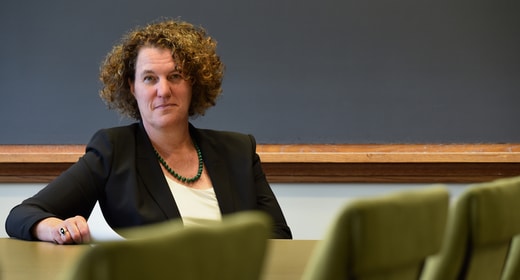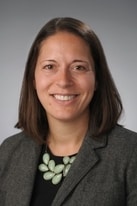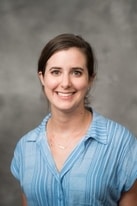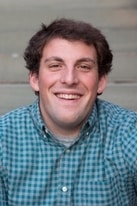
A research study that centered around a large maize-and-blue-striped envelope caught the attention of more than just the students it sought to target. The work launched a larger initiative at the University of Michigan and is being lauded as transformational by economists and educators on Twitter, with other universities taking note.
It all started in the fall of 2015 with the HAIL (High Achieving Involved Leader) Scholarship pilot led by the Ford School’s Susan Dynarski and her colleagues, including former Education Policy Initiative Postdoctoral Fellow Katherine Michelmore (now on faculty at Syracuse), Ford School alumnus C.J. Libassi (MPP ’15), now with the College Board, and PhD student Stephanie Owen.
The problem they hoped to address was simple: high-achieving students from disadvantaged backgrounds tend not to apply at all, or to apply to non-selective universities instead of highly selective ones like U-M. Over 40 percent of low-income students apply to non-selective universities, compared to 10 percent of their high-income counterparts. University of Michigan administrators had repeatedly tried to close the persistent gap between low- and high-income student enrollments, but had not been as successful as they’d hoped.
The disparity in application rates could have been due to a range of factors, but Dynarski and her colleagues were concerned about one in particular.
They doubted that low-income students had equal, early access to information — such as admission rates and costs that would allow them to make an informed decision about where to apply. In other words, they theorized that Michigan’s low-income students believed, incorrectly, that highly selective universities like U-M were too expensive or too rigorous for them.



“What we heard from doing focus groups with some of the HAIL scholars is that many did not even consider applying to U-M because they didn’t think they could get in, or that they couldn’t pay for it,” says Michelmore. “What they may not have realized, is that even though U-M might have a high cost of attendance relative to other public schools in the state, U-M offers generous financial aid packages for low-income students.”
“Students typically find out about financial aid far too late for it to affect their application choices,” Dynarski explains. “Our unconditional, early commitment of four years of free tuition and fees assured students and their families that University of Michigan is within their reach.”
Dynarski and her team believed that a targeted intervention could increase applications from low-income students, and enrollments as well. So they designed a large-scale pilot, the HAIL Scholars Program.
In 2016, the first year of the HAIL Scholarship pilot, 1,057 high school seniors who qualified for free — or reduced-price meals, and who had distinguished themselves by high grades and ACT/SAT scores, received a package from the university. It was designed to be noticed: “The large, heavy, glossy, maize and blue package made its connection to University of Michigan clear,” according to the researchers. Inside, U-M committed to full coverage of tuition and fees for four years if the student applied to and was accepted by U-M’s Ann Arbor campus. Their parents and their principals were sent letters, as well.
The application rate among targeted high school seniors exploded. Overall, 67 percent of targeted students applied, compared to 26 percent of the control group (students who also qualified for financial aid, but did not receive targeted mailings).
Perhaps more astonishingly, the HAIL Scholarship served as an equalizer across race, urbanicity, and region. It lifted application rates for groups least likely to apply, so application rates from whites and students of color, as well as urban, suburban, and rural students, roughly matched across the board.
University administrators were delighted, and the early successes led to the establishment of the Go Blue Guarantee, a major new financial aid program.
But Dynarski and her colleagues were reluctant to tout the results until they’d finished their evaluation and in particular, answered a key question: had the HAIL Scholarship initiative simply diverted students who would otherwise have applied to schools as (or more) selective than Michigan?
The results, published in an NBER working paper in December, 2018 — subsequently named “ research that shaped our world in 2018” by Quartz — are a policy analyst’s dream: a creative, low-cost intervention that yielded incredibly impressive results.
There was no diversion. “If it weren’t for HAIL, many of these students would not have gone to college at all or would have attended community colleges,” said Michelmore. “Getting students to go to U-M, where retention rates are very high, meant they were more likely to stay in college.”
“Professor Dynarski’s HAIL Scholars project is a great example of what can happen when faculty apply their research skills and creativity to a challenge confronting the university—in this case, how to economically diversify the student body,” said U-M President Mark Schlissel.
“The program will have a dramatic impact on access to top-notch higher education. It’s likely to be replicated by universities all over the country,” said Michael S. Barr, Joan and Sanford Weill Dean of Public Policy.
Dynarski and her colleagues welcome that possibility, writing that they would “welcome collaborations with scholars, college administrators, and policy actors who wish to test this approach in their own backyards.”
Dynarski’s success is just the latest accomplishment in a career marked by rigorous, policy-relevant research projects designed to ensure that all students have an opportunity to succeed.
“As a first-generation college-going student, I personally benefitted from access to higher education and can truly say it transformed my life,” said Dynarski. “Finding that this method is remarkably effective, we can build on it to continue lowering the barriers to higher education.”
Below is a formatted version of this article from State & Hill, the magazine of the Ford School. View the entire Winter 2019 State & Hill.
